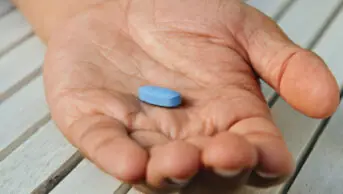I write a letter in response to The Pharmaceutical Journal article ‘GPs must take on more responsibility for paediatric prescribing from hospitals‘ by Alison Tennant, published on 13 September 2021. The opinion piece sets out to raise questions as to why more paediatric prescribing does not occur in primary care.
The author states that carers “do not care who the commissioner is or who should prescribe; they simply want access to the right medicine at the right time”. It is important to stress that the GP team, hospital team, community pharmacy team, carer and, most importantly, the patient would need prescribing to be done in the safest possible manner.
In the piece, different sector perspectives are assessed. The author mentions that “secondary care prescribers spend significant amounts of time contacting GPs to discuss safety concerns so that patients can receive medicines locally”. If there are safety concerns from a colleague regarding a potential drug treatment that has been recommended, they have the right to raise their queries as they are ultimately ensuring the safest prescribing for the patient.
The article touches upon potential solutions, including sharing information between secondary care and primary care, ensuring “initiation or changes to medication are communicated more clearly”. The article also mentions the “opportunity to grow expertise in paediatric prescribing in primary care teams”.
The one perspective missed from this article was the GP perspective, or even the primary care perspective. A prescriber, whether that be in secondary or primary care, is entitled to make the decision whether to prescribe a medication or not; others cannot dictate what an individual should or should not prescribe. What is evident from the article is the potential lack of education within primary care on specialist prescribing for paediatric patients. I believe secondary care need to work with their GP colleagues, community pharmacists and general primary care team on paediatric prescribing to enable them to prescribe in a way that is both safe and convenient for the patient, while allowing the prescriber to make an informed decision when prescribing. In addition, effective communication from secondary care to primary care, and vice versa, is essential. Prescribing without clear directions as to what should be prescribed, the duration of the prescription and the evidence behind prescribing the medication, if unlicensed, for example, will always lead to hesitancy in prescribing. Ultimately, the prescriber has a duty of care to ensure the patient receives the right medicine at the right time.
Finally, we cannot ignore the huge and well documented pressures that our primary care colleagues are facing on a daily basis, both in GP surgeries and community pharmacies, and similarly we cannot overlook the pressures that are being experienced in secondary care. We need to avoid apportioning blame on a particular sector and, conversely, we need to support each other to provide the safest and most integrated service for the patient. We as health care professionals need to be working as a team, across both primary and secondary care, and not just doctors, but all pharmacists in hospitals, GP surgeries and community pharmacies, and all non medical prescribers and beyond, ensuring that those who are potentially prescribing medication for paediatric patients, feel empowered to do so both safely and effectively ensuring the best holistic treatment for our paediatric population.
Reem El-Sharkawi, Welsh Clinical Leadership Fellow, Pharmacy and Prescribing branch, Welsh government


